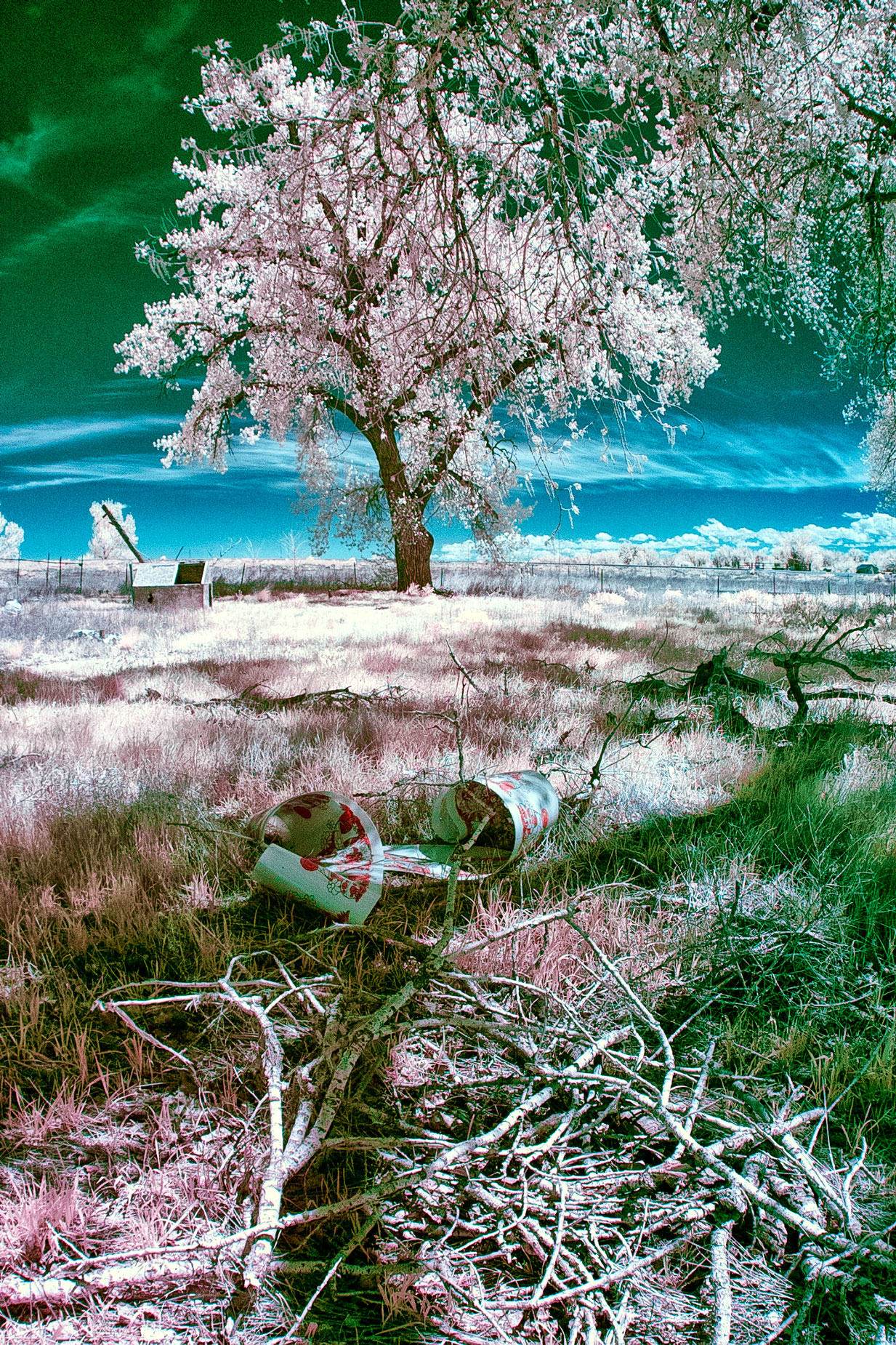Today’s Post by Joe Farace
“Eschew the ordinary, disdain the commonplace”—Chuck Jones. Yes, that Chuck Jones who also said “Bugs is who we want to be. Daffy is who we are.”
Lest you think digital infrared photography is an esoteric pursuit, a recent Google search turned up 9,600,000,000 hits for “digital IR.” By comparison “Gum Bichromate” produced only 546,000 hits; In comparison that latter technique seems even more esoteric.
Why Shoot Infrared?
 The simplest reason for shooting digital infrared photographs is that the technique has the power to transform a mundane visual experiences into something much more interesting. Everyday scenes you might walk right by and never think of photographing, take on a dreamy look, as my wide likes to say, when visualized in the infrared spectrum. Nevertheless, digital IR photography is not for everyone. To fully embrace the concept, I have to assume that dark skies, snow-white foliage, increased contrast and odd color combination, as in today’s featured image, appeal to your aesthetic sensibilities and, what the heck, it’s fun.
The simplest reason for shooting digital infrared photographs is that the technique has the power to transform a mundane visual experiences into something much more interesting. Everyday scenes you might walk right by and never think of photographing, take on a dreamy look, as my wide likes to say, when visualized in the infrared spectrum. Nevertheless, digital IR photography is not for everyone. To fully embrace the concept, I have to assume that dark skies, snow-white foliage, increased contrast and odd color combination, as in today’s featured image, appeal to your aesthetic sensibilities and, what the heck, it’s fun.
How I Made this Photo: This infrared image is an homage to the work of the late Jerry Uelsmann (1934-1987.) He was an American photographer who received international recognition for his surreal, enigmatic photographs that were made with his unique method of composite printing and his dedication to revealing the deepest emotions of the human condition. I know that my work will never come close to what this genius produced but that won’t stop me from trying.
This single, non-composite photograph was made with a Canon EOS D30 that was converted to a standard-type infrared conversion (720nm) by a company no longer in business. The lens used was a Zenitar 16mm f/2.8 lens with an exposure of 1/320 sec at f/16 and ISO 400 and a Plus two-third stops exposure compensation. The CRW RAW file was converted to color using the Vivenza plug-in.
Digital IR photography has many advantages over shooting infrared film. When shooting IR film—and this is something I’m planning to be writing about— you need to use special film and load and unload it in total darkness. When combined with shooting though almost opaque filters and using an Exposure Index that could best be described as “what the heck.”
To work with IR film you needed special camera filters. While that is certainly true if you use a bone stock DSLR or mirrorless camera, there are other options. With IR film, like the Rollei INFRARED I plan on shooting this summer, there are also some processing requirements that, while not onerous, whether you do it yourself or send to a lab, that can add an extra step. With digital IR capture you can make prints at Wal-Mart directly from your memory card.
Many images captured with IR film can also be grainy while digital infrared image may or may not be noisy depending on the ISO setting you’ve chosen. If you find digital noise or film grain for that matter, objectionable, you can find some ways to control it in my post “Tips for Dealing with Digital Noise in Your Photographs.”
Digital IR capture lets you immediately check the exposure immediately after capture and make any necessary changes in your camera settings using the exposure compensation control or the camera’s manual controls. One of the biggest advantages of using mirrorless cameras is that you can make that adjustment just by looking at the EVF before you snap the shutter. Exposure for IR film, on the other hand, can be mostly experience and guesswork.
 I’ve found that Life Pixel does a great job with IR conversions and they’ve done most of the conversions for my Canon DSLRs and all of my Panasonic Lumix G-series cameras. This is not a paid or sponsored endorsement, just my experience.
I’ve found that Life Pixel does a great job with IR conversions and they’ve done most of the conversions for my Canon DSLRs and all of my Panasonic Lumix G-series cameras. This is not a paid or sponsored endorsement, just my experience.
New copies of my book, The Complete Guide to Digital Infrared Photography are currently available from Amazon for $25 while used copies are starting at four bucks as I write this. Creative Digital Monochrome Effects has a chapter on IR photography and new copies are available from Amazon for $11.46 with used copies starting at a little more than six bucks, which is a heckuva deal.